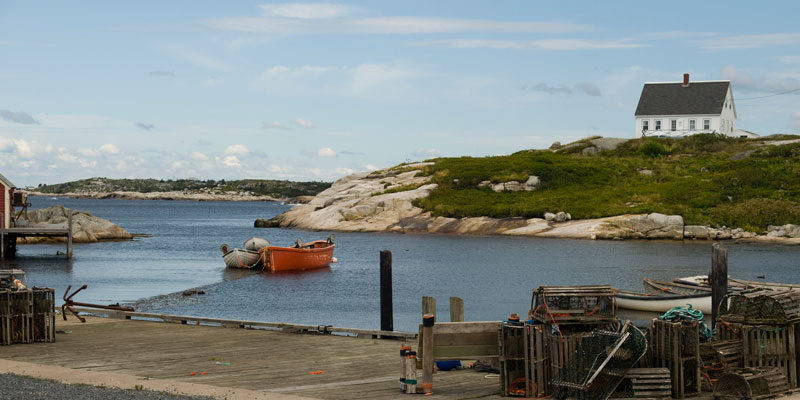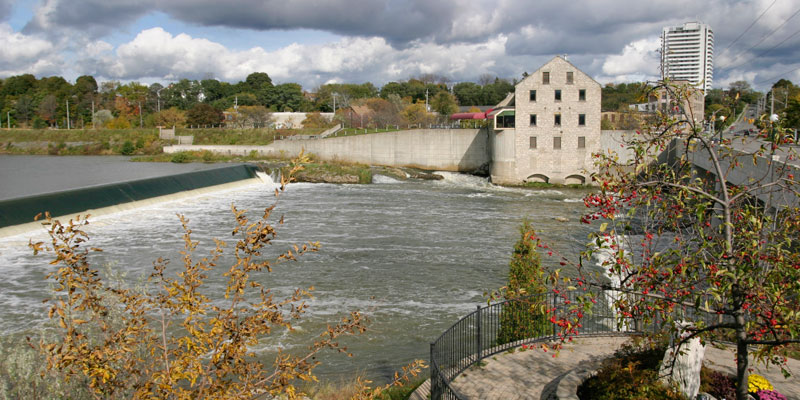Source Water Protection in Surface Waters: Evaluating Novel Monitoring Strategies for the Prioritization of Threats and the Prevention of Waterborne Disease Outbreaks
Principal Investigator - Sarah Dorner, Assistant Professor, Canada Research Chair on Microbial Contaminant Dynamics in Source W, 2012 - 2014

Challenge
The declining quality of groundwater, resulting from present and past agricultural land‐use has evolved from a topic of concern to a major regulatory issue worldwide. Specific focus has been placed on excess nutrients and microbial contaminants from regional land application of commercial fertilizer and manure. Legislation designed to enhance both economic and environmental sustainability in agricultural practices is under consideration, yet there is a lack of critical science-based support for developing policy tools.
Beneficial Management Practices (BMPs) intended to minimize impacts on groundwater quality through regional nutrient management are being proposed and implemented with little understanding of performance expectations.
Led by Dr. Sarah Dorner, the project’s overarching objective is to develop a monitoring and modeling framework for municipal partners that integrates information on the sources, fate and transport of microbial contaminants in their source waters, to rank threats and assess vulnerability for better mitigation strategies, and to make better water infrastructure investment decisions.
Project
This project responds to the water treatment needs of a diverse group of six municipalities — Montréal, Greater Toronto Area (City of Toronto, Regions of Peel and Durham) Halifax, Brantford, Essex County and Ottawa-Gatineau — that use surface waters for their raw water supplies.
The project’s municipal partners seek to better understand the distribution of viruses and bacteria at drinking water treatment plant intakes from a variety of sources. These sources include combined sewer overflows, storm waters, rivers that drain agricultural and urban lands, and wastewater plants operating in normal and bypass conditions. This project will assess these water treatment processes to identify threats to drinking water across all sites. These threats would not necessarily be identified by monitoring and would not have been considered among the threats typically provided in provincial guidelines.
Partners involved in this research have also identified gaps in data and knowledge that impede their ability to identify sources of fecal viruses and bacteria as well as the circumstances that lead to peak densities of these contaminants. At some sites (Brantford, Peel Region, Montréal, Halifax), means to estimate potential fecal loading from livestock and wildlife in affected source waters will be developed.
For each site an enhanced source water monitoring program will be developed and implemented. These programs will then be assessed to understand whether monitoring strategies can guide source water protection activities.
Outputs
Anticipated outputs include:
- A model of sewer exfiltration has been presented to the City of Montréal, providing them with information on the potential hydraulic connection between a potential source of pathogens and their drinking water intake.
- Development of a framework for municipalities to monitor their watershed and raw water supplies for microbial contaminants, to characterize priority microbial threats in their source waters (all sites).
- Lead researcher Dr. Sarah Dorner was a keynote speaker at the 17th International Symposium on Health-Related Water Microbiology (WaterMicro2013 Symposium, Florianopolis Island, Santa Catarina, Brazil, September 2013) to present research results related to microbial contaminants in catchments.
- A literature review on wastewater sources of microbial contaminants is being finalized.
- To disseminate knowledge, researchers have participated and organized several meetings of researchers, end-users and partners on several occasions in 2012 and 2013.
Outcomes
Anticipated outcomes include:
- Changes in practice related to improved microbial risk assessment models by better characterizing source water conditions (all sites).
- Improved models of pathogen sources, fate and transport to link threats to impacts on water supplies (Ottawa-Gatineau, Greater Toronto Area, Halifax).
- Improved source water protection policies to mitigate threats based on their potential to contribute to peak pathogen densities (all sites).




